How the Mets and Cubs became MLB playoff contenders again

It’s been seven long years since the Chicago Cubs played truly meaningful baseball in October. Barring an epic collapse, though, that streak will come to an end just over three weeks from now when the Cubbies enter the National League Wild Card Game.
It’s been nine long years since the New York Mets played truly meaningful baseball in October. Barring an epic collapse, though, that streak will come to an end just over three weeks from now when the Amazins head into the National League Division Series.
Among the many differences between the 2008 and 2015 Cubs, the most noticeable may be the composition of the team’s lineup. Seven years ago, the Cubs had the eighth-oldest group of position players in all of baseball. Of the 13 players to record at least 100 plate appearances, 11 of them were 28 or older.
Among the many differences between the 2006 and 2015 Mets, the most noticeable may be the composition of the team’s rotation. Nine years ago, the Mets had the second-oldest group of pitchers in all of baseball. Of the five pitchers to start at least 15 games, four were 34 or older.
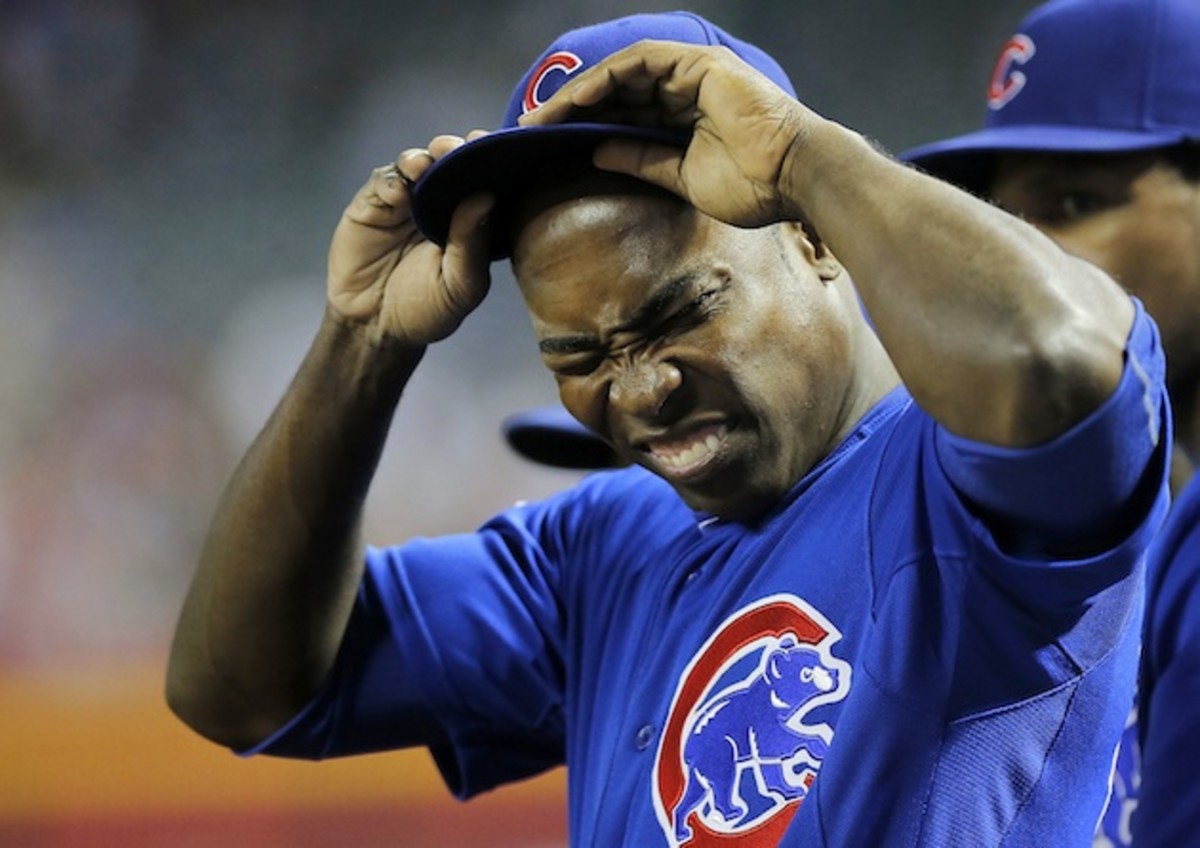
The 2008 Cubs gave a combined 58% of their plate appearances to Derrek Lee, Mark DeRosa, Alfonso Soriano, Jim Edmonds, Kosuke Fukudome, Henry Blanco and Darryl Ward, a group of players with an average age of 33.3 years old. That crew collectively averaged 2.17 Wins Above Replacement (WAR), per FanGraphs calculations, and that’s despite DeRosa and Soriano putting up 4.2 and 3.8 WAR, respectively.
The 2006 Mets gave a combined 65% of their starts to Tom Glavine, Steve Trachsel, Pedro Martinez and Orlando Hernandez, a group of players with an average age of 37.3 years old. That crew collectively posted an ERA of 4.33, about 3.5% better than the National League average of 4.49. They posted an average of 1.93 WAR, per FanGraphs calculations, though that’s partially due the 35-year-old Trachsel’s 0.5-WAR season.
• MORE: Mets surge in SI's latest Power Rankings
The 2015 Cubs have the third-youngest group of position players in the majors. Of their 12 players with at least 100 plate appearances this season, half are 25 or younger.
The 2015 Mets have the 13th-youngest group of pitchers in the majors, mostly owing the ageless Bartolo Colon having eaten up 176.2 innings. Of their five players to start at least 20 games this season, four are 28 or younger.
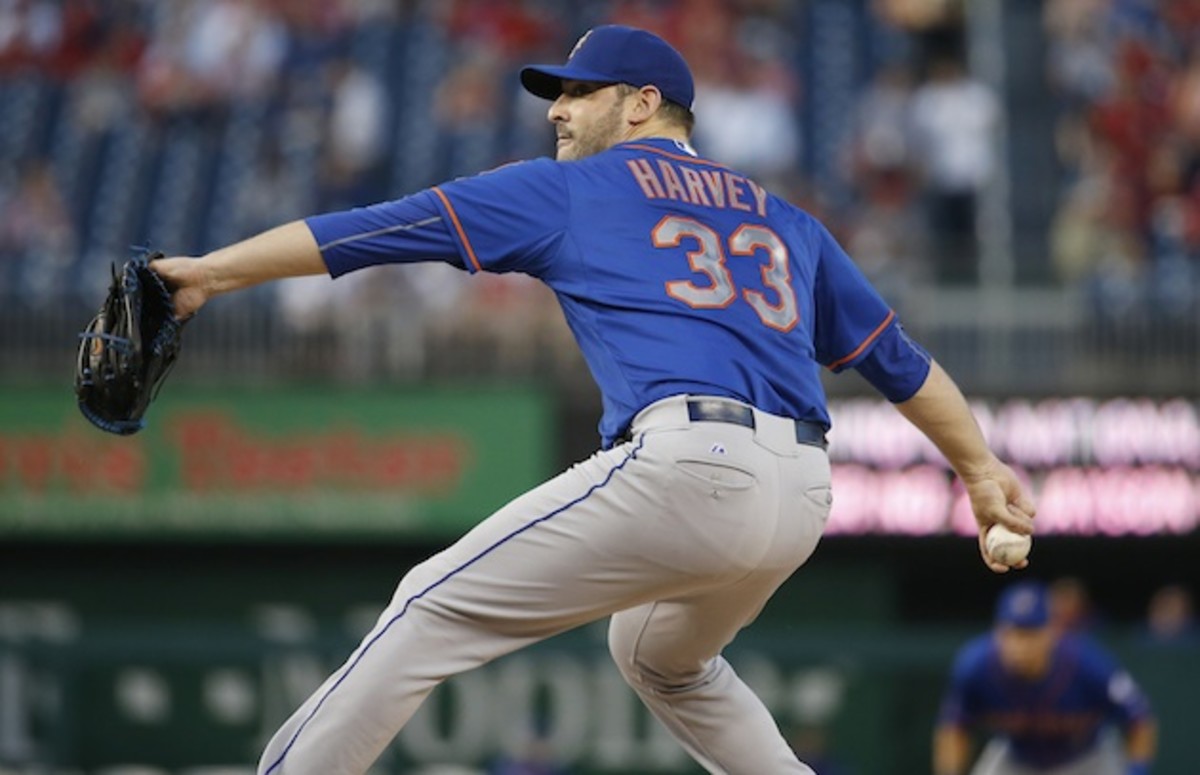
The Cubs have given a combined 58% of their plate appearances to Kris Bryant, Anthony Rizzo, Kyle Schwarber, Addison Russell, Starlin Castro and Jorge Soler, a group of players with an average age of 23.2 years old. They’ve posted an average of 2.37 WAR, per FanGraphs calculations, and that’s despite both Castro and Soler posting negative-WAR seasons and Schwarber having played only 53 games heading into Monday’s play.
The Mets have given a combined 71% of their starts to Jacob deGrom, Noah Syndergaard, Matt Harvey and Jon Niese, a group of players with an average age of 25.8 years old. That group has collectively posted an ERA of 3.19, about 20% better than the National League average of 3.97. They’ve posted an average WAR of 2.9, and that’s despite each of them making fewer starts because of innings limits, the Mets’ experiments with a six-man rotation, and Syndergaard’s delayed start to the season.
Bryant, in particular, has been a revelation for Chicago. The presumptive NL Rookie of the Year, Bryant came up to the big club two weeks into the season and has been mashing the ball ever since. He’s posted a .271/.366/.489 slash line that works out to 34% better than league average (by wRC+), the seventh-best mark among qualifying NL hitters. His 24 home runs are an alltime first-year player record for a franchise that’s been in existence in some form or another since 1874. The previous leader was Mandy Brooks, who knocked 14 balls over the fence 90 years ago. We know by now that RBIs are more a measure of opportunity and luck than skill, but Bryant’s 92 are also a Cubs' first-year player record, smashing the previous high of 79, which was set by Rip Russell in 1939. Among North Side first-year players with at least 100 games played, Bryant’s .855 OPS is second to only the .875 posted by Dwight Smith in 1989. He’s not just a slugger, either. He’s stolen 12 bases and contributed 5.9 runs above average with his base-running, while also serving as a vacuum-cleaner at the hot corner and posting 4.6 Defensive Runs Above Average (DEF). Baseball-Reference’s WAR pegs him as the second-best Cubs rookie of all time.
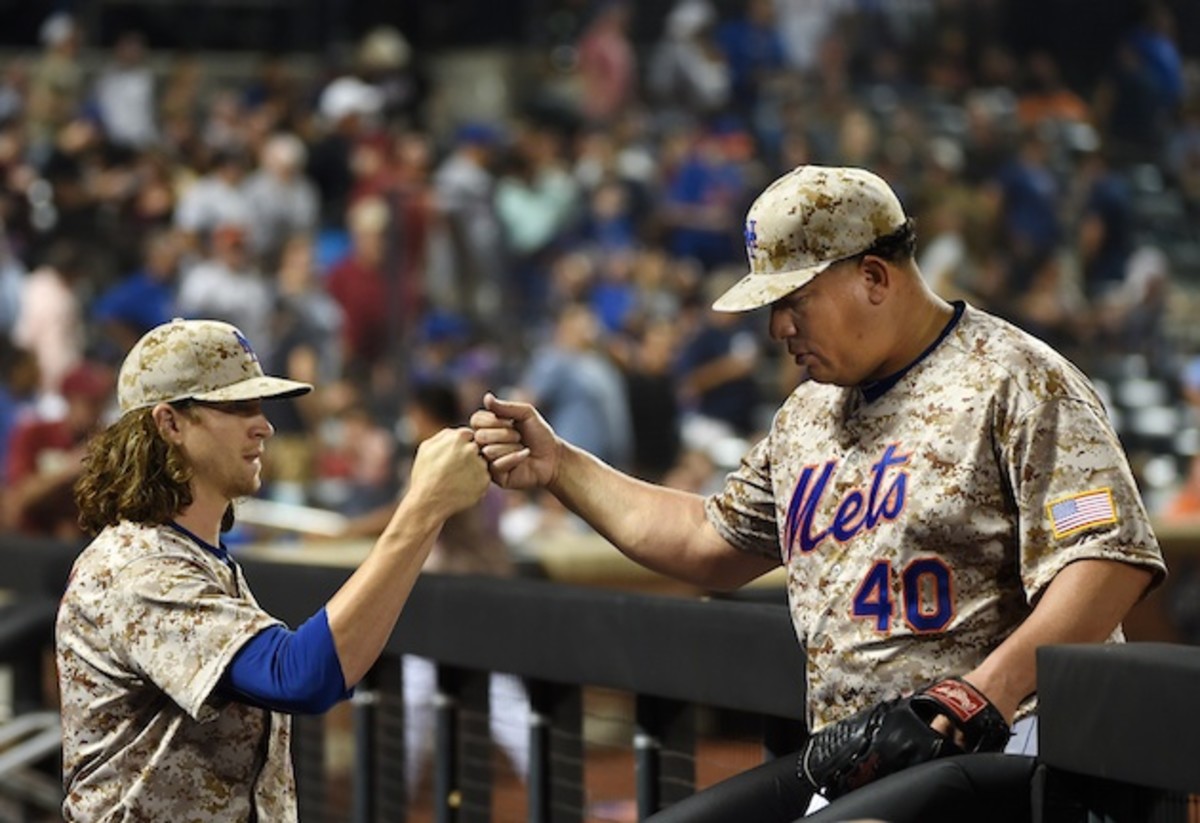
DeGrom, in particular, has been a revelation for New York. Last season’s Rookie of the Year, he has somehow been even better as a sophomore. His 2.40 ERA is 57& better than the National League average, while his 2.88 FIP (Fielding Independent Pitching, which attempts to measure a pitcher’s effectiveness at preventing home runs, walks and hit batsmen as well as causing strikeouts) is seventh-best in the NL. He’s held hitters to a pathetic .216/.268/.320 slash line across 176 innings. His 9.41 strikeouts per nine innings rank as the sixth-highest mark among qualifying NL starters and his fastball, which averages just south of 95 miles per hour, has been the third-most effective pitch in all of baseball, according to FanGraphs.
Bartolo Colon shows he belongs in playoffs while Cards, Pirates lose
Though Bryant has been Chicago’s best position player (if we’re going by WAR), the contributions of first baseman Rizzo cannot be overlooked. Rizzo’s .278/.388/.523 slash line has actually been even better than Bryant’s; it’s the fifth-best in the National League average at 47% better than league average. Rizzo has 29 homers and 15 steals, making him one of just five players with at least 25 and 15. His next homer will make him the fifth Cub ever to notch 30 dingers and 15 swipes in the same season. The only thing keeping him from leading Cubs batters in WAR is Bryant’s superior defensive acumen.
Though deGrom has been New York’s best starter (if we’re going by FIP), the contributions of rookie Syndergaard cannot and should not be overlooked. Syndergaard didn't debut until the middle of May, and he’s made only 21 starts as the Mets have toyed with a six-man rotation at times, but he’s made those starts count, going at least six innings in 13 of them and allowing three runs or fewer in 17. The 6'6", 240-pound righty sports the second-fastest fastball in the majors (among those with at least 100 innings pitched) with an average of 96.4 miles per hour. He complements that heater with one of baseball’s most devastating breaking pitches. Syndergaard’s curve ranks as the MLB’s ninth-best, according to FanGraphs’ tracking.
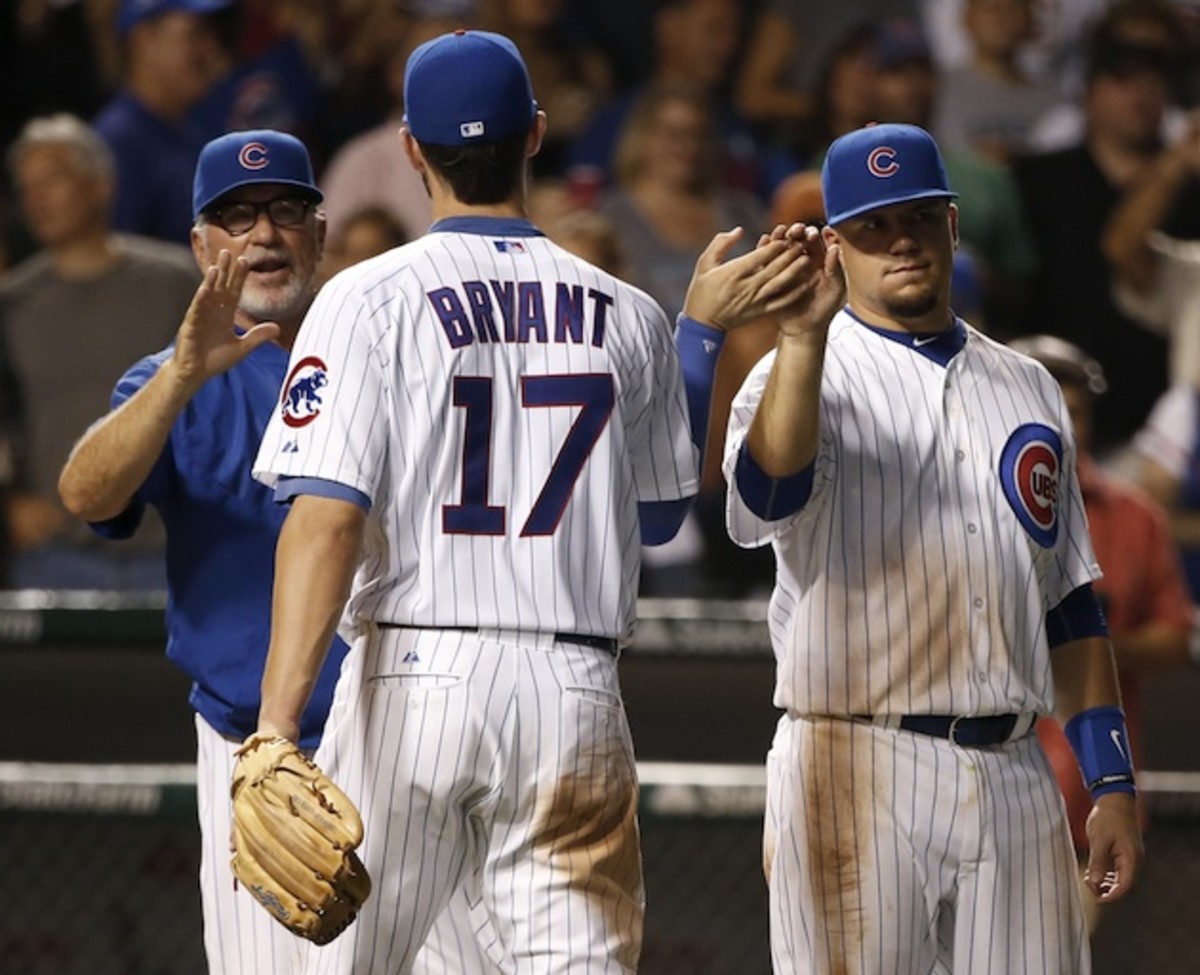
While Bryant and Rizzo have done much of the heavy lifting in the lineup, no young Cubs position player has been splashier than Schwarber. Schwarber first came up to the bigs in June, when the Cubs had a stretch of six straight games against American League teams. In five starts, he notched eight hits in 22 at-bats, smacking a homer off Indians’ starter Danny Salazar. That short stint saw Schwarber hit .364/.391/.591, an unsustainable level of production that nevertheless set the stage for what would come later. Schwarber came up for good when Miguel Montero went on the 15-day DL in July. Since his full-time debut on July 17, the Cubs are 35–20, the third-best record in all of baseball. Schwarber himself has seen his average and OBP dip slightly, but he’s still crushing the ball to the tune of a .261/.359/.567 line that works out to 49% better than league average. His 16 home runs are the second-most ever for a Cubs' first-year player (behind only Bryant). He’s reached that number in just 53 games. Those 16 bombs are the second-highest all-time total for a first-year player that played fewer than 70 games. His .306 isolated power is the fifth-best in all of baseball. His hard contact rate of over 42% is seventh-best in the MLB. He’s a monster.
Though deGrom and Syndergaard have done much of the heavy lifting in the rotation, no young Mets starter has been splashier (though admittedly, not always for good reasons) than Matt Harvey. The Dark Knight missed the last month of 2013 and the entire 2014 season after having Tommy John surgery, and he’s returned as a reasonable facsimile of the pitcher he was before. In 36 starts prior to his injury, Harvey was 12–10 with a 2.39 ERA and 0.99 WHIP. In 26 starts this season, he’s 12–7 with a 2.88 ERA and 1.04 WHIP. His strikeouts per 9 are down, but his walks per 9 are, too. He’s allowed batters essentially the same batting average on balls in play, but he’s giving up fewer line drives. His average fastball velocity in 2015 is within 0.1 miles per hour of his 2013 average. Other than the way he’s been treated by Mets fans and the New York tabloids, the only appreciable differences between 2015 Harvey and 2012-13 Harvey are the aforementioned dip in strikeout rate and a slight jump in home run-to-fly ball ratio.
• MORE: Awards Watch: Cespedes is not an MVP candidate
Apart from their age and performance, you may have noticed another difference between the 2015 Cubs and Mets and their past counterparts.
While Lee, DeRosa, Soriano, Edmonds, Fukudome, Blanco and Ward were all acquired via trade or free agency, Bryant, Schwarber, Castro and Soler were all drafted or signed and then developed by the Cubs. Russell was acquired via trade a year before his major league debut. Only Rizzo ever stepped on the diamond as a member of another team, as he played 49 games for the Padres back in 2011.
And while Glavine, Trachsel and Martinez were free agent imports and El Duque was acquired via trade, deGrom, Harvey and Niese were drafted and developed by the Mets and Syndergaard was acquired via trade two and a half years before his MLB debut and came up through the Mets’ farm system.
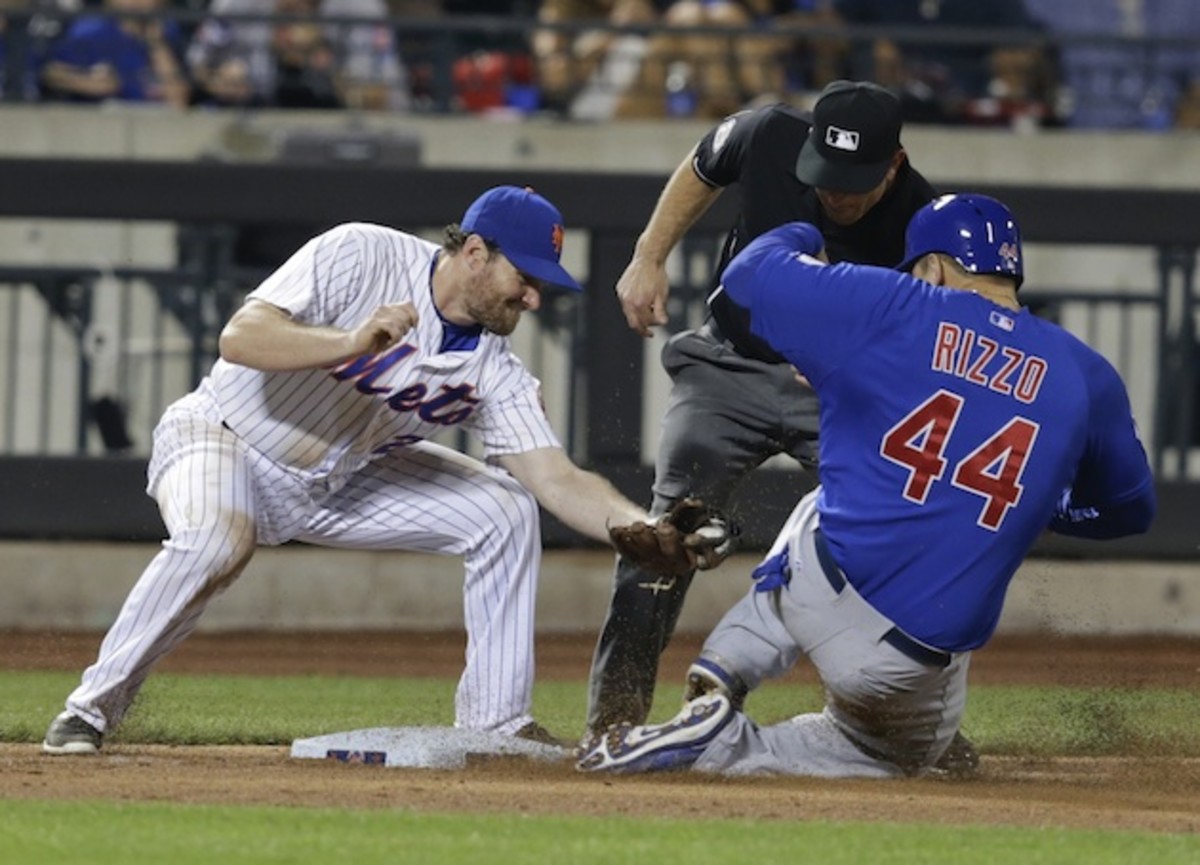
Chicago and New York each invested significant resources over a number of years remaking their respective rosters.
The Cubs did it with homegrown hitters, wading into the trade and free agent markets for pitching talent. Not one of their four pitchers with at least 25 starts this season was drafted or developed in-house, but Jake Arrieta, Jon Lester, Kyle Kendricks and Jason Hammel have collectively posted an ERA more than 18% better than the NL average. They’ve gotten contributions from imported hitters like Miguel Montero, Chris Coghlan and Dexter Fowler, but the backbone of the lineup — and the team — for the foreseeable future will be made up of kids groomed by the organization. The six making contributions this year are not even the end of the line, as the Cubs have infielder Javier Baez up already, as well as outfielders Albert Almora and Billy McKinney in Double-A and shortstop Gleyber Torres in High-A, among others.
The Mets did it with homegrown pitchers, and though they do have multiple position players developed in-house that have made strong positive impacts this season (Lucas Duda, Travis d’Arnaud, Wilmer Flores and Michael Conforto chief among them), their two WAR leaders are imported outfielders Curtis Granderson and Yoenis Cespedes, while acquisitions like Michael Cuddyer, Juan Uribe and Kelly Johnson have upgraded what was once a woefully thin bench. All of those players have contributed to the Mets making their unexpected run to first place, but the backbone of the team for the foreseeable future will be made up of kid pitchers groomed by the organization. The four making contributions are not even the end of the line, as the Mets have Steven Matz up already and Zach Wheeler rehabbing from Tommy John surgery of his own.
Both Chicago and New York have been awaiting this influxes of talent and their corresponding effect on wins and losses for awhile now. For the last few years, they’ve been teams focused on the future rather than the now. But given the way they’ve performed this season and the additional help on the way, for the Cubs and Mets both, the future sure looks like it’s here to stay.

